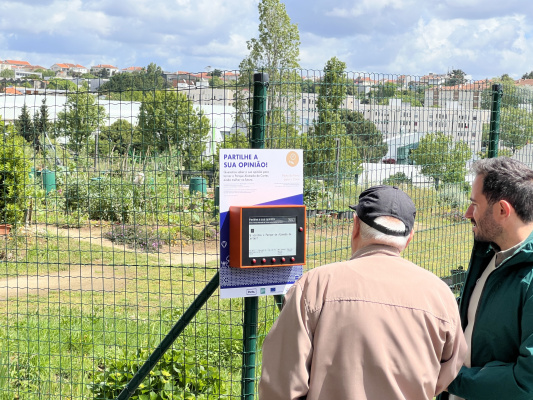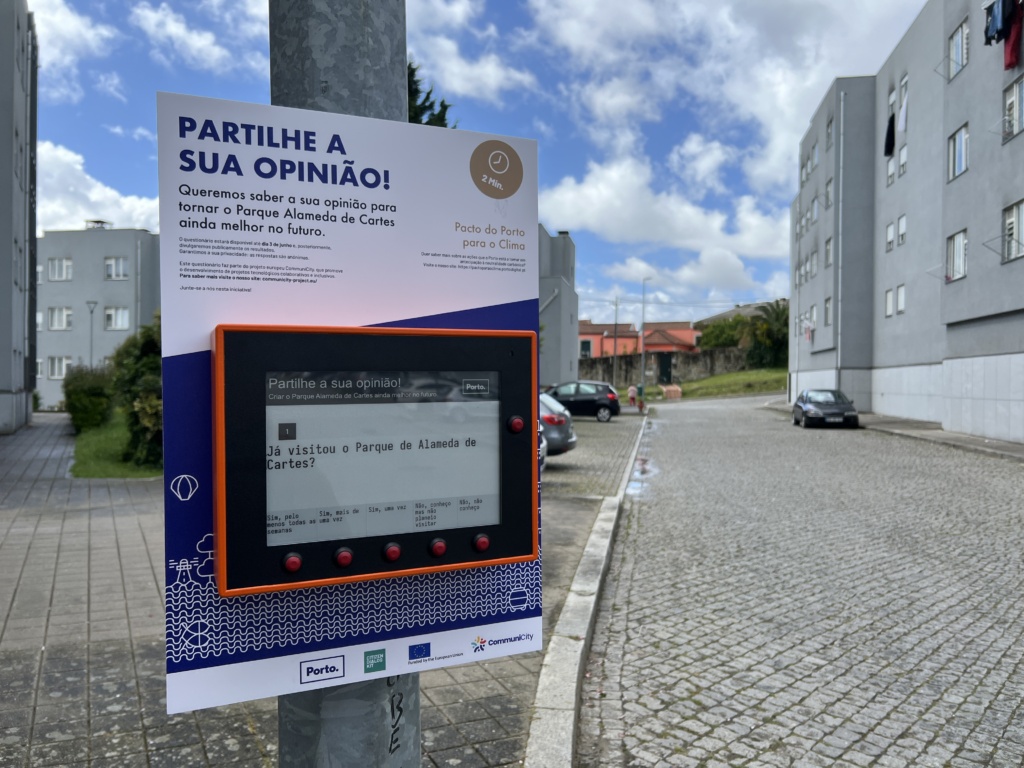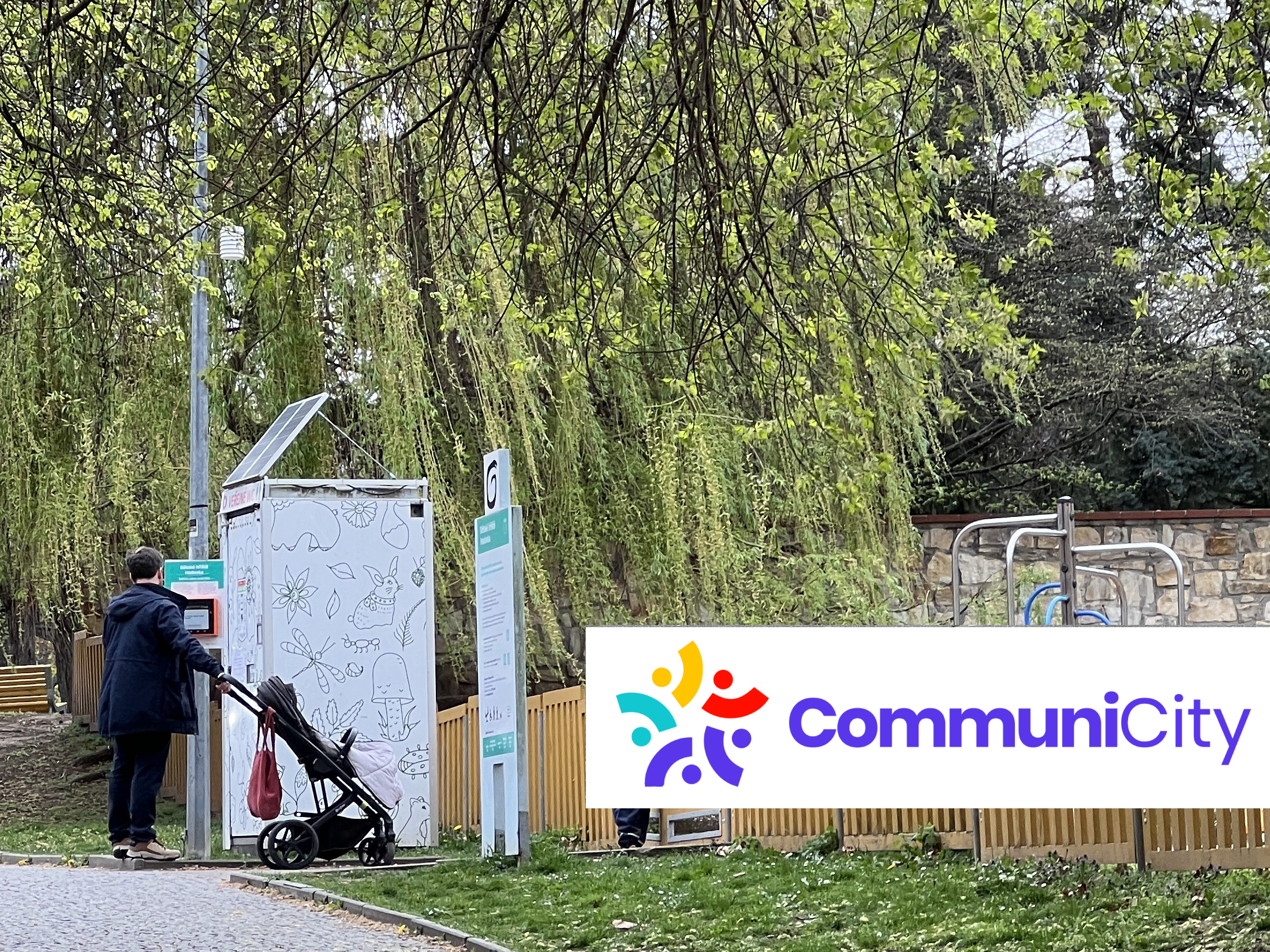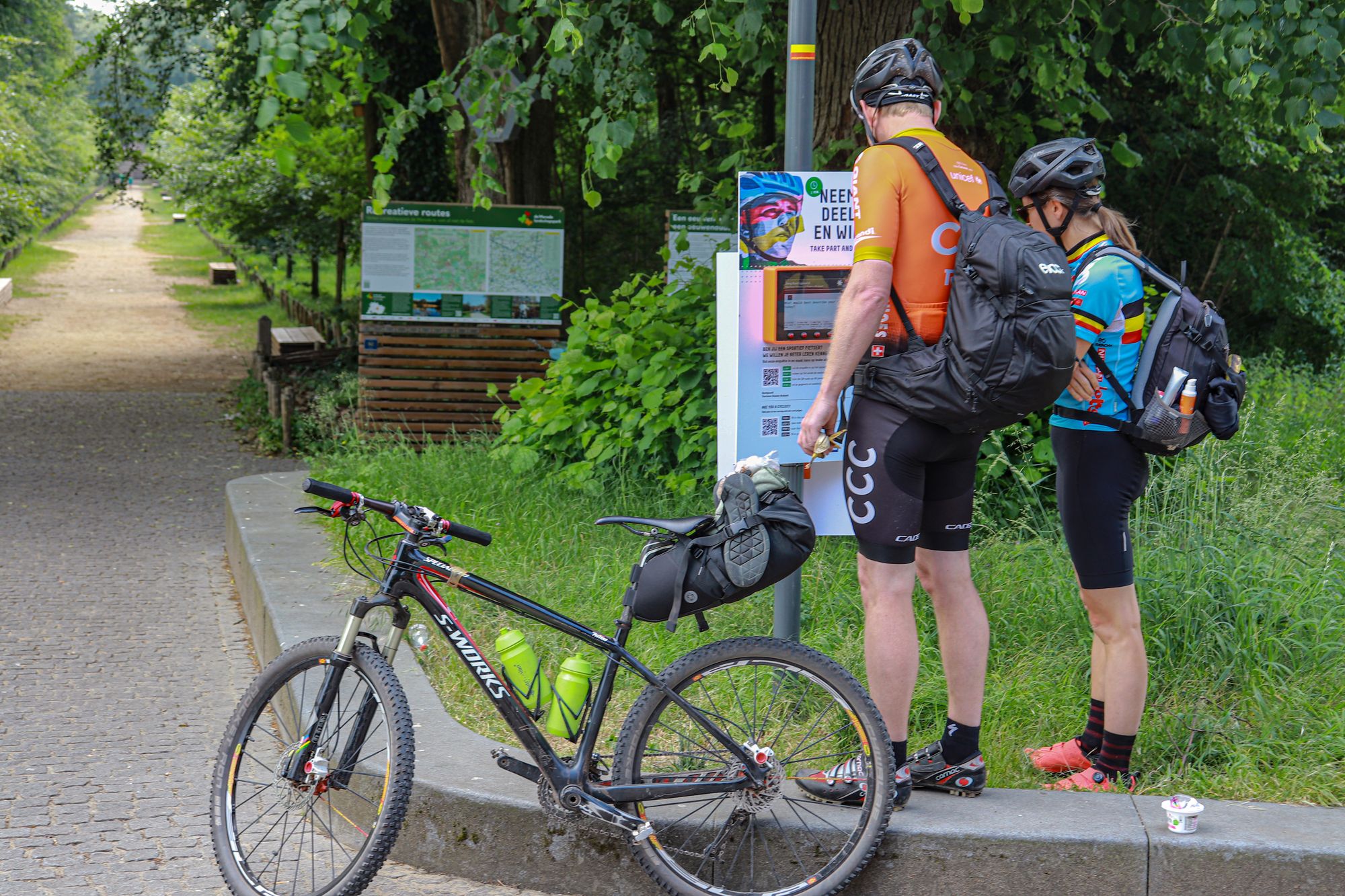Citizen Engagement in Porto: A Case Study on Park Alameda de Cartes
What were the objectives of this case study?
Cities benefit from public parks in so many ways: from encouraging physical activity and improving mental well-being, to environmental comfort and biodiversity. For six weeks, we deployed our wireless survey devices in the newly developed Park Alameda de Cartes to better address the needs and wishes of locals and visitors. The park is situated in the Campanhã district of Porto and was developed in the context of the EU URBiNAT project.
With the survey, we aimed to gather valuable information and feedback from park visitors and local inhabitant. The insights gleaned from this project are valuable for understanding visitor demographics, experiences, motivations, and potential improvements. We focussed on 3 topics:
- Who visits the park?
Understanding the demographics of park visitors is essential for tailoring facilities and activities to meet their needs. Our wireless survey devices captured data on: age groups, frequency of visits, distance to the park, and mobility choices.
- How is the park experienced?
Visitor experiences are a critical aspect of park usability and satisfaction. We focused on several key elements: reasons for visiting (or not), which facilities are missing, and impact of the park on mobility.
- Which activities improve the park experiece?
Encouraging regular and increased use of the park is a primary goal for community planners. The survey sought suggestions on: preferred activities and events, for different age groups.
Continues below the photo.

About CommuniCity
CommuniCity is a transformative citizen-centred project funded by the European Commission under the Horizon Europe Programme. CommuniCity and its consortium of partners works together with tech companies and providers, organisations, cities and their residents to develop innovative technical solutions to overcome digital, urban and social challenges.
The CommuniCity project launches three rounds of Open Calls that provide grants for up to 100 innovative pilot proposals. This project is one of the selected submissions for the Second Round.
For more information, visit: https://communicity-project.eu/
How was the deployment carried out?
Before the launch of the survey, we headed to the park with our devices to interview locals and passers-by. The goal of these short street interviews was to test the wording, flow and content of the survey. Based on this vital citizen feedback, we revised the survey to increase its readability and accessibility.
Next, the deployment took place over the course of 6 weeks. Using 2 Citizen Dialog Kit devices, we engaged over 462 passers-by who completed a total of 279 surveys. Devices were located at the top of the park near to an adjacent primary school, and at the bottom near to social housing buildings.
Continues with insights below the map and photos.


What were the insights from the deployment?
The insights gathered from our survey at Park Alameda de Cartes provide a rich understanding of visitor demographics, experiences, and desires. The results highlights the park’s role in improving local mobility, the need for enhanced safety measures, and the interest in more recreational facilities and events.
- Demographics
The majority, 74%, have already visited the park. Most of the participants are 19-40 years old (33%) or 40-65 years old (30%). The age category 65 plus represented 17% of participations, indicating strong engagement from the elderly. 76% of respondents live nearby or within a 10-minute walk from the park.
Over 80% of visitors come to the park on foot, underscoring the park’s accessibility and integration into the local community.
- Experience
The primary reasons for visiting the park are as a passageway (34% of respondents) and for relaxation (30%). Safety is cited by 26% as the primary reason for not visiting the park. Children’s play areas (34%) and sports facilities (23%) are desired the most.
A significant 88% of respondents agreed that the park has facilitated better mobility in the area, highlighting a key success of the park’s redevelopment.
- Activities
With 24%, many are interested in more sports activities, though not as popular as concerts and shows (31%). Specifically, live music (54%) is popular with young adults, followed by children’s events (34%). Surprisingly, many seniors also expressed interest in participating in sports activities.
Concludes with reflections below the photo and chart.


Reflections
Fieldwork at the deployment locations made clear again how important it is to test surveys with the target audience.
- Accessible wording is crucial: keep it simple and to the point. Do not try to combine multiple questions into one.
- Think from the perspective of a person standing there (e.g. “Where do you live?” – “Right here!”).
- Be aware that a survey can trigger other questions but maintain focus on what is within the scope of the project.
Partners
- Municipality: Porto
- Facilitation: Porto Digital, Domus Social
- Funding: CommuniCity (Funded by the European Union)








